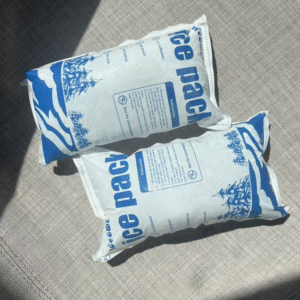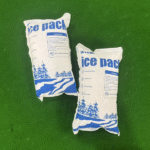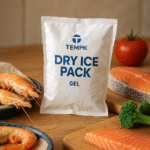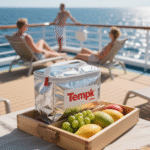Trockeneisbeutel: Wo man kaufen kann 2025 (Praktischer Leitfaden)
Wenn Sie fragen dry ice packs where to buy In 2025, the best answer depends on whether you need real dry ice (Solid Co₂) or reusable PCM/gel packs. This guide compares local pickup, online choices, and bulk suppliers, then shows how to size coolant, markieren UN1845, and avoid costly mistakes while protecting product temperature. You’ll get fast decision tools and compliant pack-out steps you can use today.
-
Find sources fast: local, online, Und bulk dry ice packs with pros and cons.
-
Choose the right coolant: real dry ice vs PCM “dry‑ice‑level” packs for frozen shipping.
-
Ship by the book: 2025 UN1845 Etiketten, Klasse 9 für Luft, and USPS/FAA limits.
-
Right‑size costs: einfach 5–10 lb/24 h Regel, plus insulation upgrades that save mass.
-
Act with confidence: a 60‑second chooser and a step‑by‑step pack-out workflow.
Where to buy dry ice packs near you in 2025?
Kurze Antwort:
Buy real dry ice from industrial gas distributors and grocery chains that stock it; buy “dry‑ice‑level” packs (PCMs) from packaging vendors when hazmat steps aren’t practical. Industrial gas suppliers offer pellets/blocks and consistent quality; grocery kiosks are ideal for small, same‑day needs; packaging suppliers bundle insulated shippers with gel/PCM packs for non‑hazmat routes.
Was bedeutet dies für Sie:
Pick local pickup for urgency and freshness, or schedule distributor delivery for recurring volumes. Verwenden packaging vendors when you need shippers, Etiketten, and coolant in one order. For reusable options, consider −21 °C PCM for many frozen lanes and 0 Kommen ° C. for 2–8 °C.
Lokal vs. Lieferung: when does each win?
| Quellentyp | Typical options | Lead time | Was es für Sie bedeutet |
|---|---|---|---|
| Industrial gas distributor | Pellets, nuggets, Blöcke | Same day–48 h | Consistent quality; trained staff; best for volume. |
| Lebensmitteleinzelhandel | Pre -Cut -Blöcke (varies) | Same day if in stock | Fastest for small runs; call ahead. |
| Packaging supplier | Insulated shippers, Gel/PCM | 1–3 days+ | Non‑hazmat routes or mixed coolant kits. |
Practical buying tips
-
Reserve before heat waves/holidays. CO₂ supply can tighten; add time buffers.
-
Confirm what you’re buying. Many “dry ice packs” online are PCM or gel, nicht solide Co₂; check rated temperature (Z.B., −21 °C vs −78.5 °C).
-
Bundle supplies. Befehl UN1845/“Dry Ice” Markierungen, Klasse 9 Etiketten (für Luft), Liner, and shippers together to avoid last‑minute scrambles.
Wirklicher Fall: A bakery used grocery kiosks for weekend runs and a distributor mid‑week for pellets. Mit a 20% Sommerpuffer and one standard foam shipper, spoilage claims dropped near zero.
Dry ice packs where to buy online vs. in‑store—what’s smarter?
Fazit:
In -Store pickup wins for urgent, Kleine Mengen. Online/specialized vendors win for planning, variety, and bundled kits. If you see “dry ice packs” online, they’re often reusable PCMs or gel, not CO₂; that’s great for non‑hazmat lanes but won’t reach –78,5 ° C..
Spot real dry ice vs. “dry ice” packs (Wiederverwendungen)
| Coolant type | Typical phase point | Heimat (Luft) | Beste Verwendung | Bedeutung für Sie |
|---|---|---|---|---|
| Echtes Trockeneis (Co₂) | ~−78.5 °C | Ja | Tieffrozen, long lanes | Highest cold power; Etikett & limit apply. |
| PCM pack (“−21 °C”) | ≈−15 to −21 °C | Normalerweise NEIN | Frozen foods without hazmat | Easier ops; validate duration. |
| Gel pack (0 ° C) | ≈0 °C | NEIN | 2–8 °C chilled | Einfach, cheap; not for rock‑solid frozen. |
Dry ice packs where to buy for bulk and B2B orders?
Go direct Zu industrial gas distributors for recurring dry ice orders and spec sheets. Pair with contract packaging suppliers for palletized shippers, Liner, und Etiketten. For cross‑border programs, verwenden regional suppliers to reduce transit time and freight.
Schüttgut & international tips
-
Estimate weekly usage (Z.B., 50 boxes × 5 lb = 250 lb/week). Order a buffer for summer lanes.
-
Plan storage & Handhabung. Trockeneis untermauert; use vented, insulated storage. Train on PPE and safe handling.
-
Check air shipment limits and markings if your bulk order moves by air.
-
Leverage supplier expertise for pack‑out design and validation.
How much should you buy—and how do you pack safely?
Fast rule: Planen ~ 5–10 lb (2.3–4,5 kg) von Trockeneis pro 24 H for a small, well‑insulated shipper. Increase mass for thin foam, Heiße Gassen, or multi‑stop networks. Ort product low Und Trockeneis oben, Hohlräume füllen, and vent the shipper.
Back‑of‑envelope:
Trockeneis (kg) ≈ (hold hours / 24) × 2.5–4.5 kg/day → validate with a pilot (weigh pre/post to measure sublimation).
How to pack a compliant dry‑ice shipper (Schritt für Schritt)
-
Vorschreibe product and shipper.
-
Hinzufügen Liner + absorbent; sicherstellen Entlüftung for CO₂ gas.
-
Load product low, place dry ice über Es.
-
Hohlräume füllen to reduce warm air gaps.
-
Mark the box: “Dry Ice”/„Kohlendioxid, solide", UN1845, Nettogewicht (kg); hinzufügen Klasse 9 für Luft.
-
Wählen service level: Boden (simpler) vs air (Heimat).
60‑second coolant selector (self‑check)
-
Target temp at delivery?
-
Rock‑solid frozen → Trockeneis
-
Frozen but tolerant of edges → −21 °C PCM
-
Chilled 2–8 °C → 0 Kommen ° C.
-
-
Lane time & Isolierung?
-
≤24 h + thick foam → 5–10 lb dry ice or adequate PCM
-
48+ h or thin foam → increase mass or upgrade shipper
-
-
Träger & segment?
-
Luft + limited hazmat capability → PCM
-
1–2 day ground → Dry ice or PCM, based on product tolerance
-
Feldergebnis: A seafood DTC brand swapped dry ice for −15 °C PCM on 1‑day lanes, removing hazmat steps and reducing failed deliveries while holding <−10 °C to POD.
Dry ice packs where to buy if you’re flying or mailing?
-
Passenger air travel: 2.5 kg (5.5 lb) limit per passenger/package with airline approval; the package must vent and be marked “Dry Ice/Carbon Dioxide, solid” with quantity.
-
Luftfracht: Folgen IATA DGR PI954; markieren UN1845, richtiger Versandname, Netz kg, und anwenden a Klasse 9 label on the same surface when space allows; carriers publish 2025 Checklisten.
-
USPS (Hausluft): Allowed with vented packaging and markings; bis zu 5 lb per mailpiece; international USPS is highly restricted.
These specifics reflect 2025 guidance summarized in our internal research.
2025 Entwicklungen & trends in dry ice and “dry ice pack” buying
Was ist neu (August 2025):
Carriers refreshed dry‑ice labeling checklists, reinforcing UN1845/kg marking and overpack notes under the 66th IATA DGR. CO₂ -Versorgung can tighten regionally, so reservations and dual‑sourcing matter. PCM adoption keeps rising as shippers seek simpler, reusable coolant for short/medium lanes.
Neueste Fortschritte auf einen Blick
-
Rules clarity: Updated checklists reduce labeling errors and holds.
-
Reusable shift: −21 °C PCM bricks replace some dry‑ice lanes without hazmat steps.
-
Supplier networks: More branch locators and regional plants speed local pickup.
Market insight: Cold‑chain growth across food and life sciences expands supply, technology options, and negotiated pricing opportunities. Validate new solutions on your lanes before scaling.
FAQs
Q1: Where can I buy small quantities—dry ice packs where to buy today?
Verwenden grocery kiosks for real dry ice or call nearby industrial gas branches for pellets/blocks; for reusables, grab PCM/gel packs from packaging catalogs or local retail.
Q2: How much dry ice do I need for a day?
Planen ~ 5–10 lb pro 24 Std. for a small, well‑insulated shipper; test and adjust for season and foam thickness.
Q3: Are “dry ice packs” online real dry ice?
Often no—most are PCM or gel. Check the phase point (Z.B., −21 °C or 0 °C) and duration in dein shipper size.
Q4: Do I need special labels to ship with dry ice?
Ja: UN1845, Eigenname, Netz kg, und a Klasse 9 label for air shipments; the package must Entlüftung Co₂.
Q5: Is dry ice safe for food and pharma?
Yes—when vented and handled with PS; avoid confined spaces. Follow exposure guidance and never seal in airtight containers.
Zusammenfassung & Empfehlungen
Schlüsselpunkte: Buy real dry ice from industrial gas oder retail kiosks, and buy PCM/Gel when hazmat steps are impractical. Verwenden ~5–10 lb/24 h as a baseline, setzen ice on top, Hohlräume füllen, und Mark UN1845 mit kg. Validate with a lane pilot before scaling.
Nächste Schritte:
-
Entscheiden target temp Und Transitzeit.
-
Wählen Trockeneis / −21 °C PCM / 0 Kommen ° C..
-
Reserve local pickup or place a bulk order.
-
Print labels and follow the pack‑out steps above.
CTA: Need a lane‑fit coolant plan? Request a 15‑minute sizing review—we’ll deliver a one‑page SOP for your next shipment.
Über Tempk
We design validated pack‑outs for Trockeneis, PCM, and hybrid solutions and source compliant materials with ready‑to‑print labeling. Across bakeries, Mahlzeiten, and diagnostics, our programs often reduce coolant mass 15–30% after lane testing—without sacrificing hold time. Talk to us about a route‑specific buy list and SOP you can deploy this week.
























